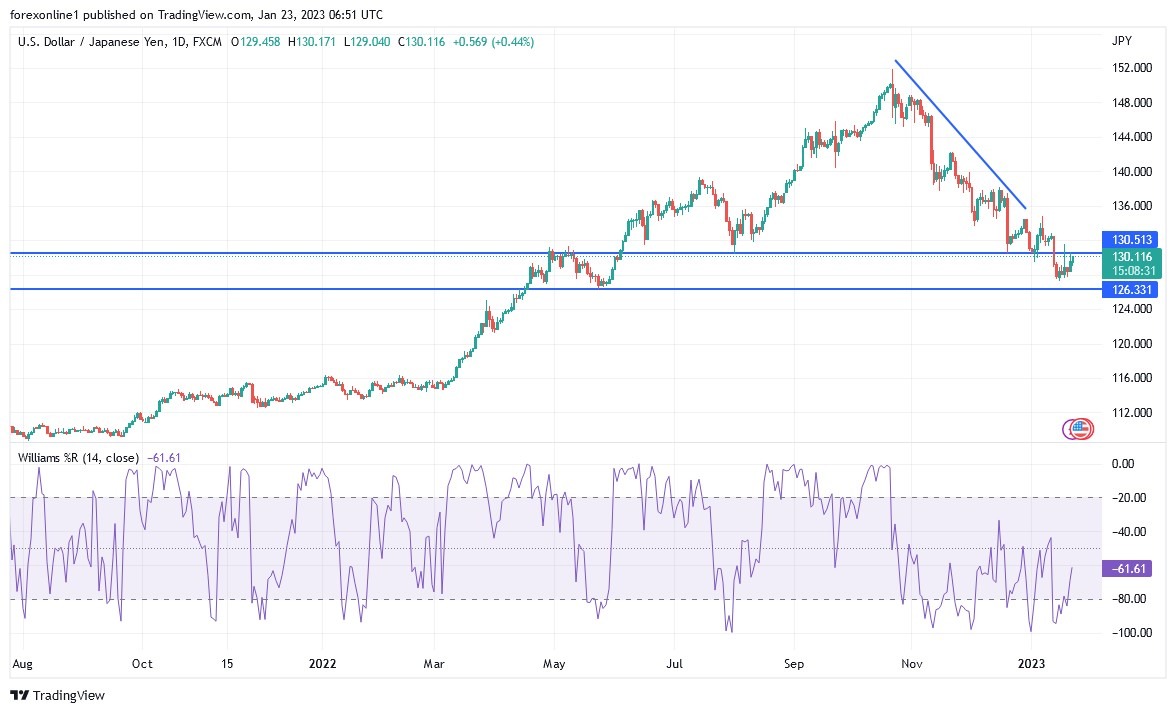There is no doubt that the recent surprise of the Japanese central bank by keeping its monetary policy unchanged contributed strongly to the pressure on the Japanese yen.
- This allowed the USD/JPY currency pair to try to exit the descending channel.
- Its gains stopped at the level of resistance 131.57 and fluctuating performance.
- After that, it closed trading last week, stable around 129.55, and by the end of the week, the bulls succeeded in testing 130.61.
- The attempts to bounce higher still lack momentum.
The Japanese yen took more modest losses towards the end of the month after domestic inflation picked up and the Bank of Japan (BoJ) remained firm in its view that further policy changes were unlikely to be necessary. Accordingly, the Japanese exchange rates fell by more than one percent in the currencies of the Group of Ten and Group of Twenty, after domestic inflation rose in line with economists' expectations to 4 percent annually, which made the Japanese yen sit at the bottom of the main currencies table for the week in general.
Friday's Japanese inflation data does not indicate an acceleration in the price line and instead gives credence to the BoJ's view that a policy change is unlikely to be necessary anytime soon. Meanwhile, BOJ Governor Haruhiko Kuroda reportedly said from Davos, Switzerland that higher inflation and wage growth would be welcome in Japan and that last month's decision to adjust the parameters of the BOJ's yield curve control program was a one-time action rather than a decision.
The Bank of Japan surprised markets in December with a decision to widen the range within which the 10-year government bond yield floats, leading to speculation of more subsequent moves in January and subsequent months, speculation that proved unfounded last week. The 10-year yield target was left unchanged at 0% while the recently expanded range within which yields are allowed to fluctuate was also maintained at 50 basis points either side of the target, although inflation expectations were just as important as the BoJ's latest. The new forecasts were for inflation at 1.6% for 2023 and 1.8% in 2024, which, given it falls short of the 2% target, dampened market bets about more policy changes likely later this year.
The Bank of Japan's developments last week came barely two weeks away from the Fed's decision in February and amid misplaced speculation that US interest rates might cut later this year. The speculation drove down US bond yields and helped lift the yen in previous weeks, but also now leaves the currency at risk from any Federal Reserve decision that forces yields and the dollar higher next month.
Technical analysis of the USD/JPY pair:
- It appears that the USD/JPY currency pair has recently completed a bearish breach from forming an ascending channel.
- This indicates a sudden change in market sentiment from bullish to bearish.
- Therefore, the bears will be looking to extend the current decline towards 128.671 or below to support 127.806.
- On the other hand, the bulls will be looking to pounce on profits around 130.561 or higher at the resistance 131.387.
On the long run, and according to the performance on the daily chart, it appears that the USD/JPY is trading within the formation of a descending channel. This indicates a significant long-term bearish momentum in market sentiment. Therefore, the bears will target the long-term profit at around 126.507 or below at the support 122.159. On the other hand, the bulls will target potential bounces around 133.353 or higher at the resistance 137.700.
Ready to trade our Forex daily analysis and predictions? Here are the best Forex brokers to choose from.

